Beyond Blue gifts us with a beautiful undersea world to explore
- Developer: E-Line Media
- Publisher: E-Line Media
- Release date: 11th June 2020
- Genre: Exploration, Education
- Platforms: Xbox One, PS4, PC, iOS
- Reviewed on: Xbox One X
- Game Supplied by: Publisher
The story of Beyond Blue follows scientist and deep-sea diver Mirai, as she and her research team track and attempt to understand more about a family of sperm whales, as well as other ocean animals. With a focus on exploration and investigation, your undersea adventures will see you travel across the globe, searching through coral-filled atolls, shallow seas and open ocean.
For anyone who saw Blue Planet 2, there are a few stand-out moments in Beyond Blue that you will recognise from the series, such as the murky brine lakes with the snake-like hagfish dicing with death as they dart into the salty, toxic pools, or the fallen giant – a whale that has died and sunk to the ocean bed – where it is being fed upon by a myriad of animals. My favourite scene, though, was that of the whales, dolphins, rays and orcas joining together to herd thousands of fish into a giant bait ball. Having the opportunity to swim in and amongst this flowing symphony of nature is amazing.
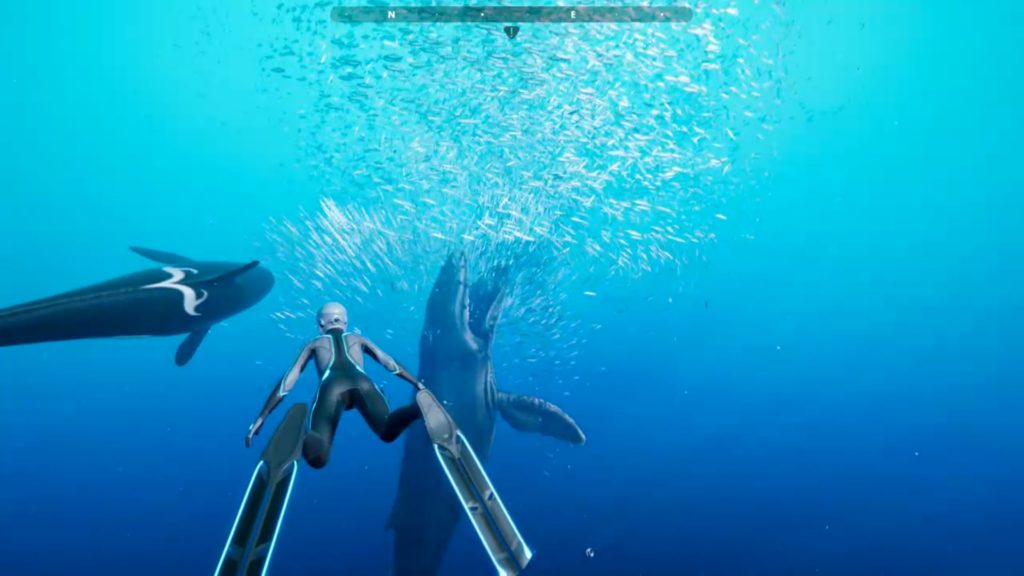
The environments you swim through are equally beautiful to look at. The graphics aren’t amazing, admittedly, but that’s if we’re speaking in strictly technical terms. The art-style itself is appealing and results in an enchanting ocean to explore, with a good variety of locations to discover, each with their own topography and characteristics. The first time I swam out across the vast ocean shelf: where you go from swimming amongst rocks before crossing an undersea cliff edge descending down into inky blackness, exposed to whatever lies beneath, conjured up the same sense of unease I get when seeing it in real life.
The true standouts of the game, though, are the animals. Each fish, mammal or crustacean you encounter has been lovingly and meticulously created to give an authentic representation of its real-life counterpart. From the places you’d find them, down to feeding behaviours and interaction with other animals, it creates a convincing, living, breathing world. There’s plenty of variety of animals, although it still feels like they could have added even more different species. This is accentuated by the fact many of the models lack any significant distinctive characteristics. Admittedly, that’s me casting a particularly critical eye upon it. For a small development team, they have done a great job.
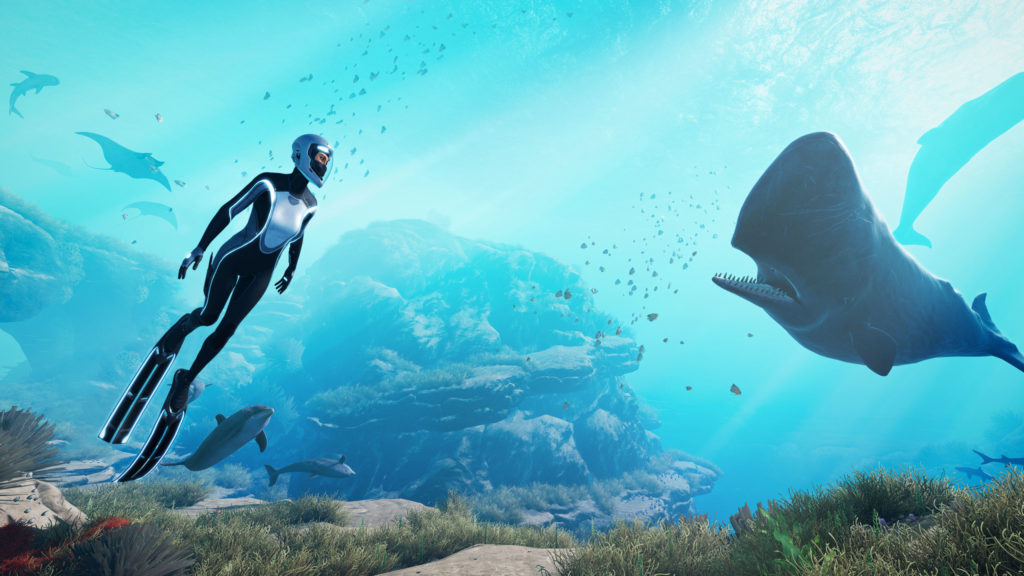
When they have spent so much effort creating a beautiful environment, it’s a shame that the fundamental aspect of the gameplay intrudes on your view of this underwater wonderland so obtrusively. The core of the gameplay revolves around scanning different animals marked on your map and compass. To scan them, you have to activate scan-zoom mode and hold RB/R1 to scan them. When using scan-zoom, the animal is given a visible marker on your screen to help you find them. The problem with this is that when zoomed in you lose a chunk of your peripheral view, and even more of that is covered by a geometric pattern that obfuscates things further. When a large part of the game involves being reliant on scan-zoom, you end up missing out on the best visuals Beyond Blue has to offer.
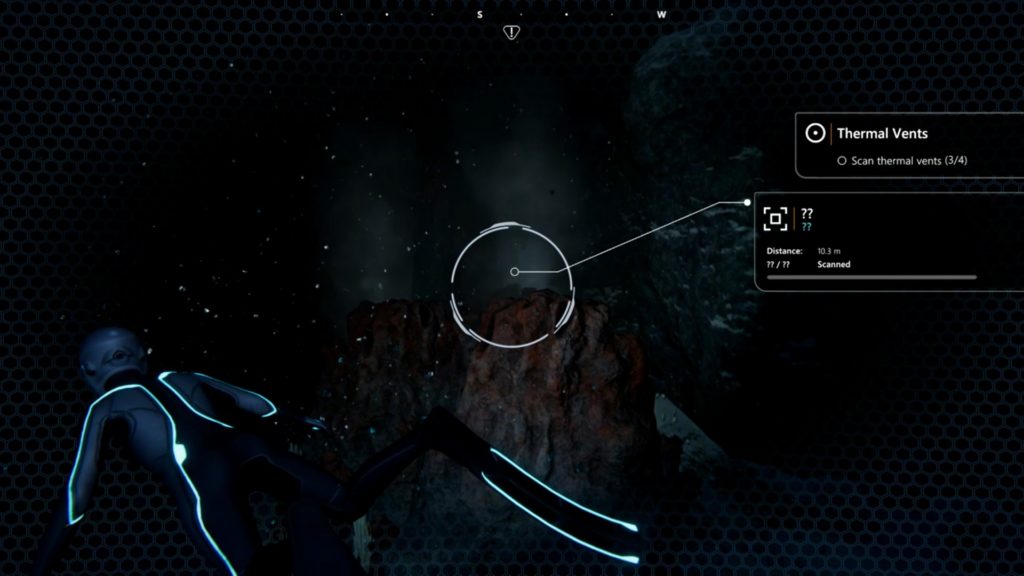
The gameplay itself is very limited. At its core, the gameplay loop revolves around entering the ocean and locating a transmitter device that will give you the locations of two or three animals to scan. Once you’ve scanned them, you head to the next transmitter and do the same thing again. There are a few set-pieces that you’ll encounter such as diving to the brine lakes or finding the giant bait ball, but at its core, it’s quite repetitive and could have done with more variation.
In between dives, you return to your submersible, where you can view facts and information about the animals you’ve discovered in your science log. This is also the place where you can view messages and receive calls from your research team and sister. The submersible mainly acts as a hub between levels, though, and the best part of the game is when you are out exploring and discovering new things.
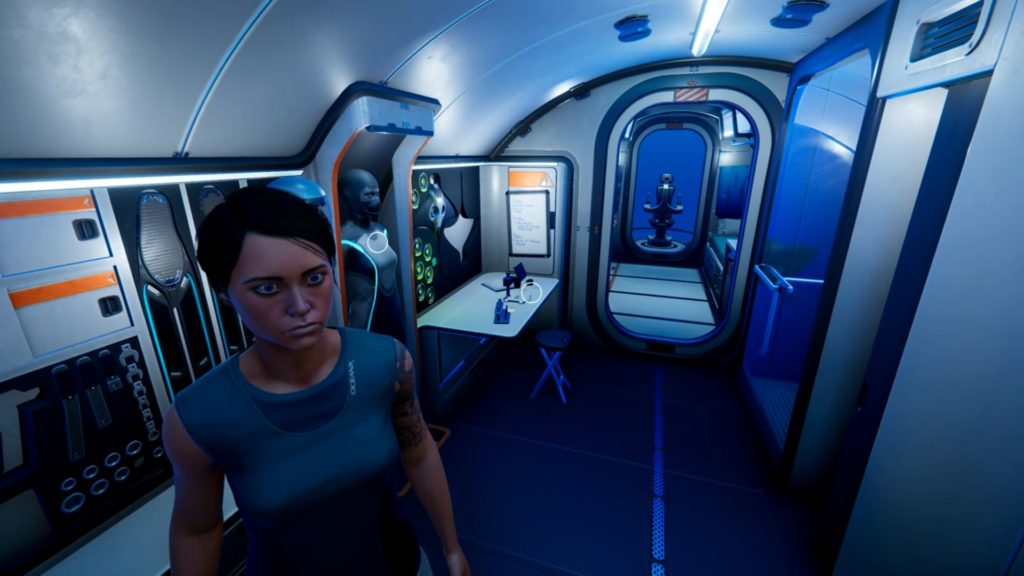
Mirai is in the ocean as an observer first and foremost, and although some animals may react to her presence, such as shoals of fish splitting apart as you pass through them, for the most part, Mirai goes unnoticed. There are no dangerous situations you will find yourself in. Even when swimming alongside fearsome ocean predators such as killer whales or white tip reef sharks, there’s no peril. There’s no oxygen meter either, so you can simply explore the ocean at your leisure, and it’s very serene.
Whether this is a good or a bad thing depends on what you want from a game though. Beyond Blue has positioned itself as a learning tool at its core, and apart from the relative mundanity of the gameplay loop, it allows you to explore and educate yourself at your pace. This is particularly appealing for those who have younger children who’d like to play. Beyond Blue provides a calming, enjoyable and fascinating look at life beneath the waves, and it’s one I gladly let my children experience.
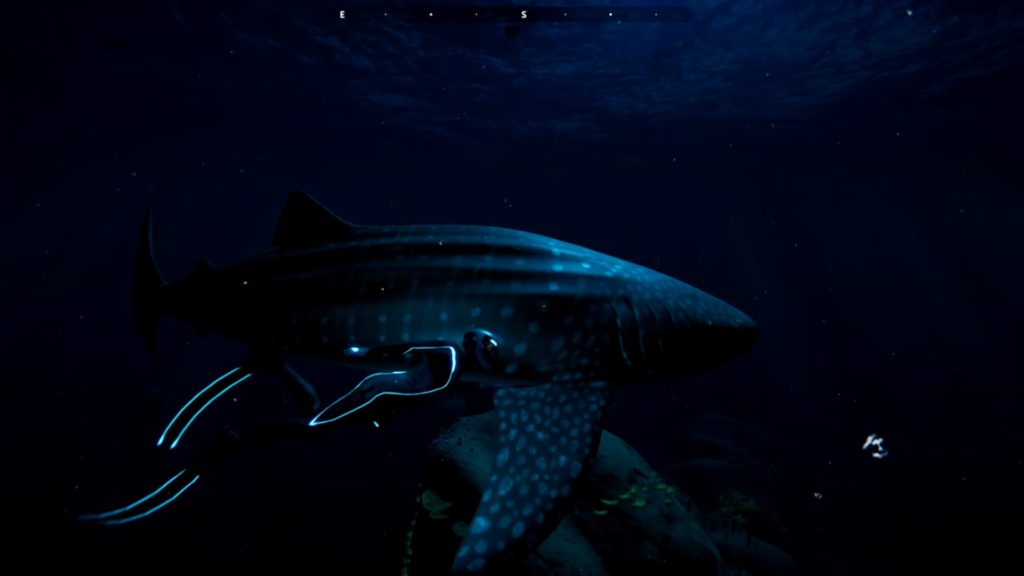
There’s not a huge amount of story in the game, but what they do include is often very poignant, and at times, heart-wrenching. The focus of the game’s story is around that of the research team, the struggles they face and the destructive effects of humanity’s dependence on disposable products and resources harvested from our seas. These narrative sequences are believably acted, and genuinely informative. The plot does err on the maudlin side of things a bit too often but when it’s regarding things like pollution of the oceans or the impact of deep-sea mining it’s befitting of the premise of the game. There are other parts that feel unnecessary, though.
The occasional conversations with Mirai’s sister Nora, in particular, feel forced. Where they were probably designed to evoke feelings of sympathy for Mirai, there’s not enough setup beforehand to make you genuinely care. There’s hints of a troubled relationship, and you are given a couple of conversation options that can steer the dialogue a certain way, but without the back story, you aren’t really sure how or why Mirai would feel a certain way. If it didn’t force you to choose a dialogue option, instead just letting it play out for you, it may have worked better, but as it is, it feels like an unnecessary addition to the story.
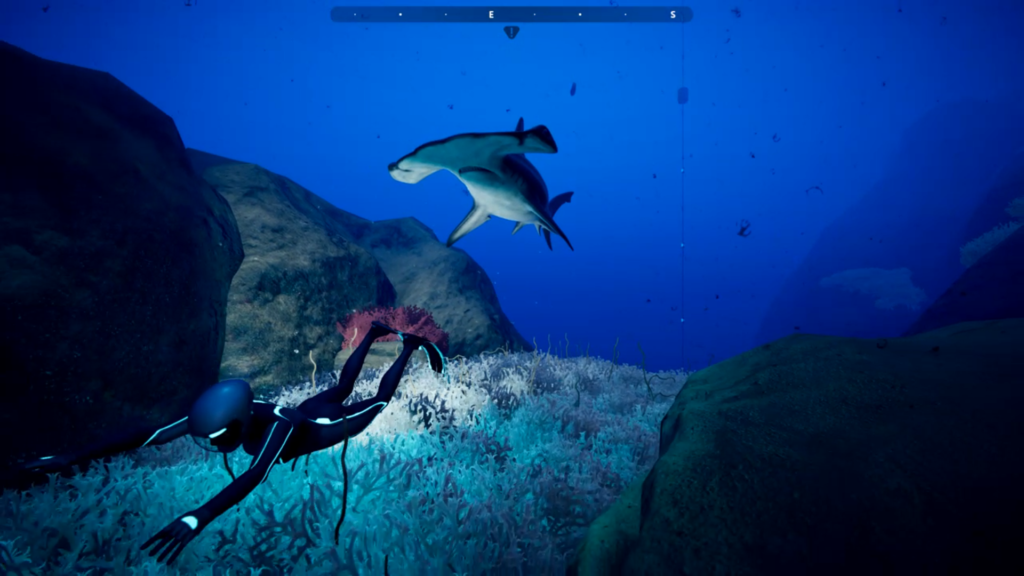
The most moving parts of the game, though, come from the unlockable FMV scenes. Even though they only clock in at a couple of minutes apiece, they are in parts inspiring, educational and emotional: In much the way Blue Planet is compelling viewing, so too are these short scenes. All they were missing were the dulcet tones of David Attenborough. It’s just a shame there weren’t more of them, and that they weren’t used as more of a plot device than an easily overlooked extra.
For the most part, Beyond Blue achieves what it set out to do. It provides a tranquil, relaxing and educational tour of the seas and oceans, imparting knowledge and encouraging you to be more considerate of our environment. Through engaging dialogue and great voice acting, it manages to impart a strong message that importantly doesn’t come across as preachy. It’s a noble aim, that is let down by the underwhelming gameplay loop. A little more time spent creating more variety of ways to interact with the creatures, or developing slightly more involving missions would have been welcomed.
Summary
For anyone with a genuine interest in the oceans, or with younger children who want a game that is informative and educational, Beyond Blue is a great adventure. The animals and environments have been rendered with care and authenticity, and the opportunity to share and explore the oceans with these majestic creatures is a rare treat.
The experience is let down by repetitive gameplay mechanics that could do with a lot more variety, but overall, Beyond Blue gifts us with a beautiful undersea world to explore.


